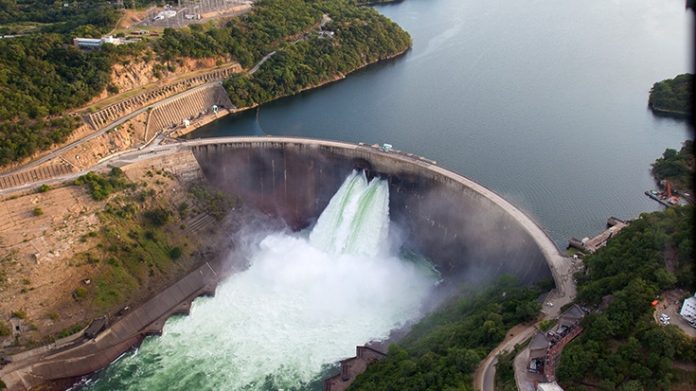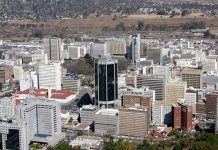Staff Writer
Water levels in the Kariba continue to increase rising above the Minimum Operating Levels due to the incessant rains received in the Southern African region.
However, the Zambezi River Authority has not increased the water allocation for hydro-electricity power generation for both Zimbabwe and Zambia.
The ZRA, a bi-National organization mandated to contribute to the economic, industrial and social development of Zambia and Zimbabwe, allocates water to both countries for hydro-electricity power generation.
In a statement, ZRA chief executive Engineer Munyaradzi Munodawafa the lake levels have continued rising due to increased rainfall activity in the Kariba catchment.
“From the last update made on 19th January 2021, the lake levels have increased by a total of 3.96 meters from the lake level of 476.80m recorded on January 19th to a lake level of 480.76 meters recorded on 2nd March 2021.
“This has placed the lake level at 5.26m above the Minimum Operating Level (MOL) of 475.50m. This lake level recorded on 2nd March 2021 translates into usable storage or live storage of 24.31 Billion Cubic Meter (BCM).
“Last year on the same date, the Lake level was lower at 477.17m with 7.48BCM of usable water or 11.55 percent live storage.”
He, however, said ZRA has maintained the 30 billion cubic meters of water allocation for power generation operations at the dam based on the meteorological projections of normal to above normal rains during the season.
The allocation, which was increased from 27 billion cubic meters in November last year, is shared equally between Zambia’s ZESCO Limited and the Zimbabwe Power Company for their respective power generation operations at Kariba.
“However, the Authority continues to monitor the evolving hydrological situation under the Kariba catchment. This is being undertaken, taking cognisance of the increased rainfall activity, and resulting water levels at Kariba dam, with the view of making consideration regarding the possibility of revising the water allocation at Kariba dam,” Munodwafa said.
The ZRA gauging stations at Chavuma and Victoria Falls along the Zambezi River have also recorded increases in flows.
“The Authority continues to gather and record daily water level readings at its 14 gauging stations located across the Kariba Catchment area, with the recorded hydrological data utilized in informing reservoir operations at Kariba dam.
“As usual, the principal gauging stations of Chavuma and Victoria Falls remain pivotal in as far as the gauging of the overall inflows into Lake Kariba is concerned.”
Zambezi River flows at Chavuma which have been increasing in the past months but have started decreasing due to reduced rainfall activity in the catchment closing at 2,292m3/s on March 2 this year.
“However, these flows are almost half of the flows recorded on the same date last year which were higher at 4,691m3/s,” Munodawafa said.
He, however, added that reduction in flows was in tune with past trends and also a normal hydrological cycle for the station whereby two peaks are recorded twice in any given season.
The first is recorded in early March while the second one is in April and the second peak is expected in April as the rainfall season progresses.
The Zambezi River flows at Victoria Falls recorded more than double increase on March 2 in comparison to that of the same date last year closing the period under review at 2,910 m3/s while 969 m3/s was recorded last year.
“As per past trends in flows at this station, increase in flows continue to be recorded. The flows are also projected to reach another peak towards the end of April 2021,” Munodawafa said.
The ZRA is mandated by Zimbabwe and Zambia to contribute to the economic, industrial and social development of the two countries by obtaining the greatest possible benefits from the natural advantages offered by the waters of the Zambezi River.
This is expected to be achieved through the most economical and effective means of providing water for generation of electricity and for other purposes which Zimbabwe and Zambia may decide on.















